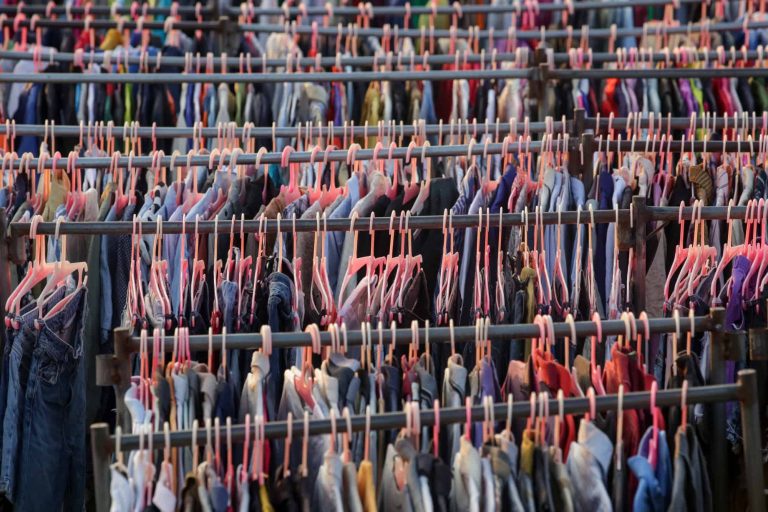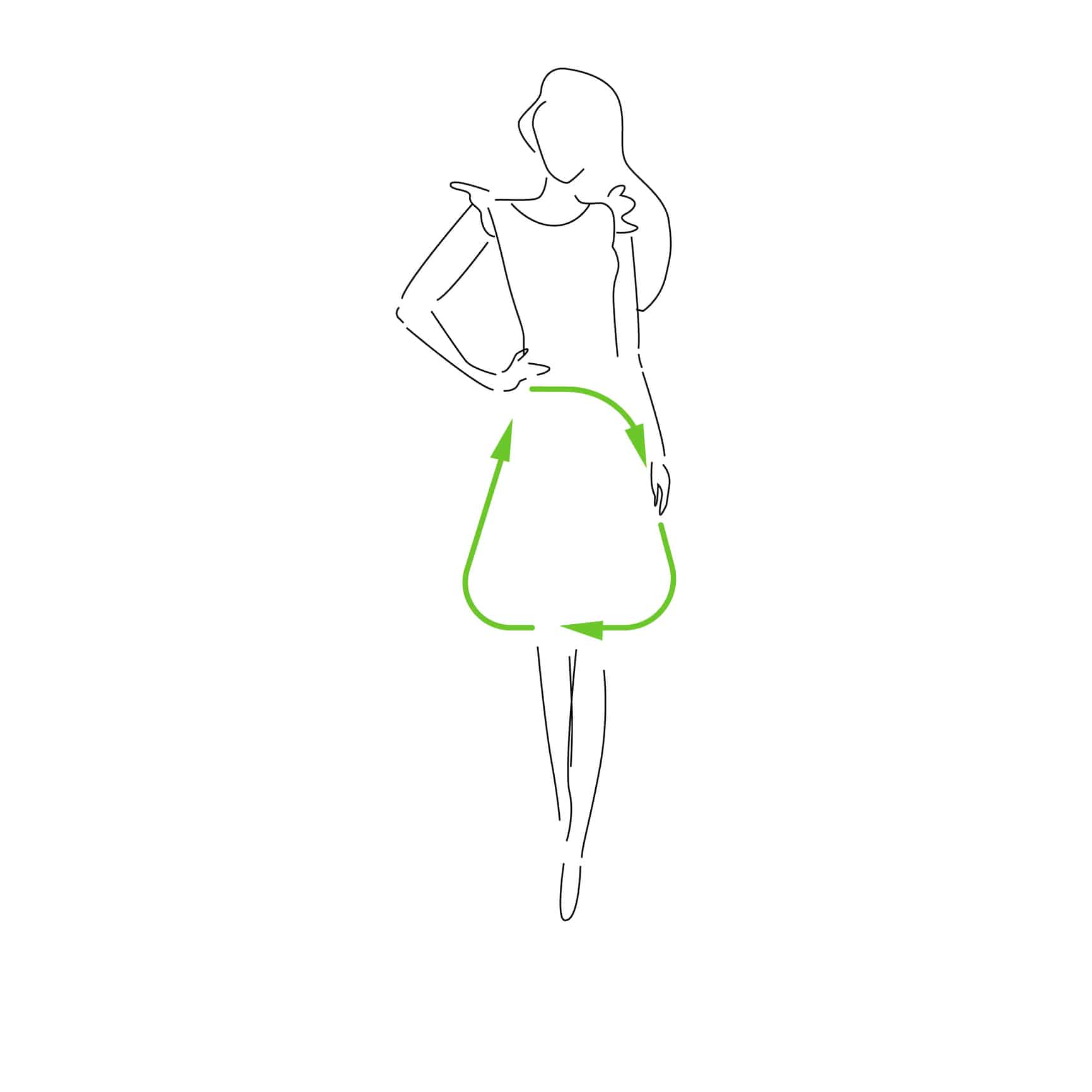Fast fashion is getting more and more popular with time, but not everyone knows that it comes with a price; the environment. The price is heavy, but we are paying it happily (ignorance is bliss I guess), unfortunately. A unique feature of fast fashion is the shorter life cycle of a garment compared to the traditional classic slow fashion. The fast fashion industry is famous for its high production, and its low product prices which lead to the disposal of clothing. Higher disposal of clothing leads to increased dumping in landfills resulting in higher environmental degradation.
New collections of fashion trends are released time after time, encouraging the quick disposal of merchandise. In brief, the fast fashion segment has two primary goals, 1) to shorten lead time 2) and to supply items in line with current trends to enhance profitability.
The clothing products are usually associated with low-cost raw materials, making prices considerably cheaper than those seen in classic slow fashion, driving impulsive buying. The market is dominated by multi-departmental store chains, some of whom have been accused of exploiting workers in conditions akin to modern-day slavery in mostly underdeveloped and developing nations. Unacceptable working conditions lead to fatal accidents risking the lives of poor workers.
The sustainability of the fast fashion industry is questioned because the emphasis on reduced lead time often leads to social and environmental sacrifices. Indeed, reports have associated fast fashion stores with working in poor conditions and using an illegal immigrant workforce. One of the well-known examples was the Rana Plaza incident that happened in Bangladesh. Dozens of people lost their lives, but little seems to have been done to avoid such incidents in the future. And one can find a similar situation in other textile and clothing-producing countries of South Asia.

On the other hand, consumers appear to be dumping apparel items at an increasing rate, sometimes without even using them. There has been an increase in apparel manufacturing, but consumption or the frequency with which a piece of apparel is used before being discarded has decreased, showing a higher rate of clothing disposal. As a result, textile waste has increased significantly in the last decade. Low-cost clothing is frequently manufactured and is made of synthetic fibres which are often not recyclable. Consequently, fast fashion manufacturing generates unrecyclable waste that stays in the environment forever.
Buyers of fast fashion are driven by psychological and social factors. They have idols that introduce the current trends, and following those idols and celebrities it has been suggested improves their self-esteem. Thus fast fashion has become a status symbol. Furthermore, the prospect of accessibility to garments that are quite comparable to expensive ones has prompted youth to consume fast fashion, even though they are somewhat aware of the social and environmental problems related to this industry.

But we are seeing changes in people’s buying behaviour with increased awareness about the earth’s depleting resources and environmental imbalances. Consumers today are demanding transparency in the clothing supply chains. Fast fashion firms are increasingly looking for new green initiatives. Global clothing and apparel consumption is expected to rise dramatically over the next decade due to the increasing population, and millions of individuals in emerging nations reach the middle class with increasing disposable income.
While this is a great business opportunity for clothing firms, it could be a potential risk for those firms who do not want to deal with the ethical and environmental implications of low-cost, resource-intensive production techniques. These risks may become even more severe as the Millenials obtain buying power; their strong expectations that brands would function responsibly may significantly impact their buying patterns. The sustainable manufacturing process may be a bit more expensive, but it might also promote innovation and shield companies from supply disruptions and reputational concerns.
Limiting the fast-fashion sector’s environmental effect would certainly need industry-wide effort. Some garment firms have created alliances to collaborate to address environmental and social issues, which aids in speeding up progress. Twenty-two clothing firms are members of the “Zero Discharge of Hazardous Chemicals Coalition”, which aims to enhance and increase the usage of harmless, sustainable chemicals throughout the garment supply chains.
Following are some of the necessary steps the textile and clothing brands can take to mitigate the social and environmental risks;

The fast fashion consumer needs to be educated and is still in the process of adopting responsible behaviour. There is a need for a more effective disclosure, seeking additional procedures to act with openness and engage the public. It would have a more significant influence on the brands’ outcome of the sustainability goals. The current situation of fast fashion buying demonstrates that there is still a lot to be done to achieve the United Nations’ 12th Sustainable Goal. Consumers may wait for corporations to take responsibility, but it appears that a collaborative effort of companies, academics, and the government is required to drive the use of more green products.
As a suggestion, clothing brands and regulatory bodies need to improve the effectiveness of their sustainability-related requirements. They need to enhance the efficacy of the communication channels used to reach the public for publicising sustainable practices. Records shared by clothing companies clearly show that the advertisements regarding green practices were insufficient to change the customers’ choices to more conscious consumption.
People need to rethink their needs before buying new clothing and try to extend the life of the clothing they already possess.
| Cookie | Duration | Description |
|---|---|---|
| cookielawinfo-checbox-analytics | 11 months | This cookie is set by GDPR Cookie Consent plugin. The cookie is used to store the user consent for the cookies in the category "Analytics". |
| cookielawinfo-checbox-functional | 11 months | The cookie is set by GDPR cookie consent to record the user consent for the cookies in the category "Functional". |
| cookielawinfo-checbox-others | 11 months | This cookie is set by GDPR Cookie Consent plugin. The cookie is used to store the user consent for the cookies in the category "Other. |
| cookielawinfo-checkbox-necessary | 11 months | This cookie is set by GDPR Cookie Consent plugin. The cookies is used to store the user consent for the cookies in the category "Necessary". |
| cookielawinfo-checkbox-performance | 11 months | This cookie is set by GDPR Cookie Consent plugin. The cookie is used to store the user consent for the cookies in the category "Performance". |
| viewed_cookie_policy | 11 months | The cookie is set by the GDPR Cookie Consent plugin and is used to store whether or not user has consented to the use of cookies. It does not store any personal data. |
Create your free account and begin your sustainability journey.

